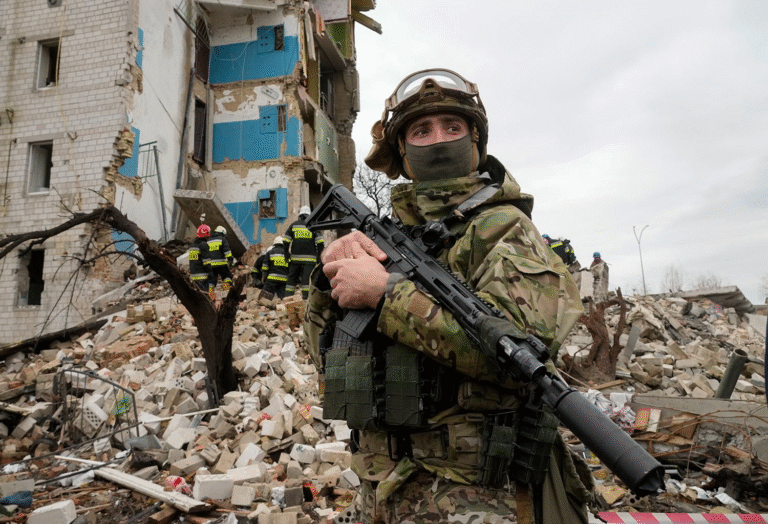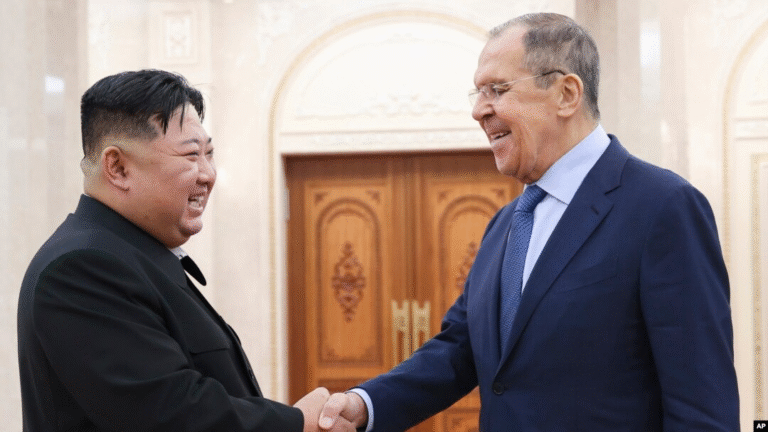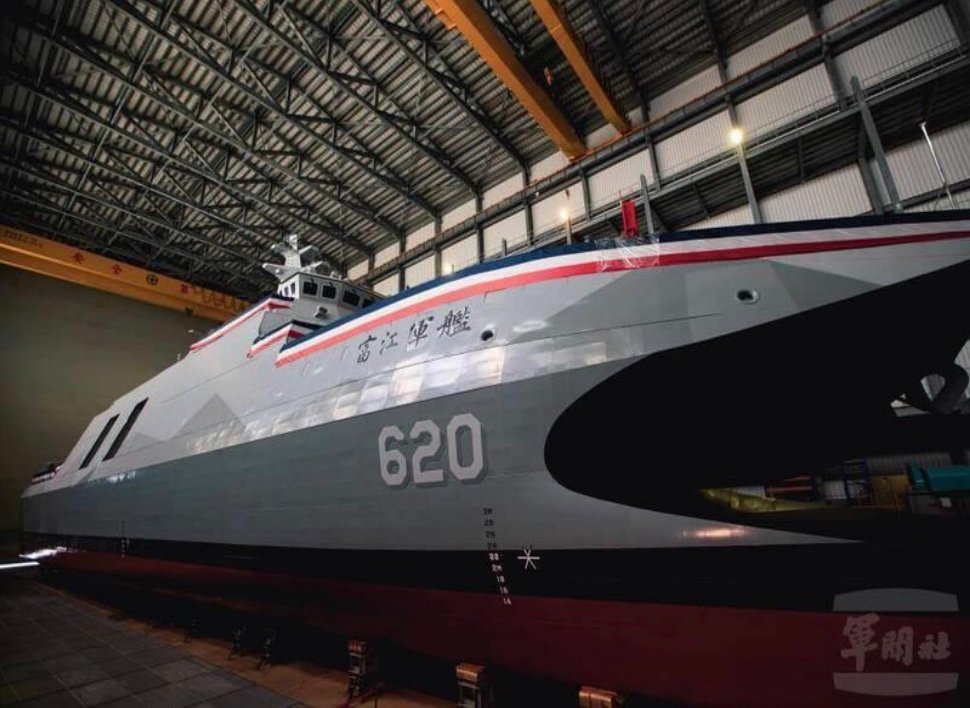
Lung Teh Shipbuilding delivered ROCS Fu Chiang (PGG-620) to the Republic
of China Navy (Source: Taiwan Military News Agency)
Yen-Han Chen
East Asia & International Security Programs
The America-Eurasia Center
www.eurasiacenter.org
The America-Eurasia Business Coalition
www.usebc.org

Taiwan’s new Chief of the General Staff, Mei Chia-shu Taipei Times
In a move that sent shockwaves through the Taiwanese military world but received little
attention outside of Taiwan, Mei Chia-shu was announced as Taiwan’s next Chief of the General
Staff, replacing the retiring Chen Pao-yu. Mei was also promoted to Vice Admiral. In a
corresponding move, Vice Chief of General Staff Tang Hua will assume Mei’s former role as the
Commander of the Navy.
Mei’s promotion was an unexpected move, and it symbolized shifting strategies in Taiwan’s
strategy in defense. At 60, he is the youngest Chief of General Staff in Taiwan’s history. In the past,
Mei would have likely been passed over for a more senior officer, such as the General Liu Jen-yuan
of the Republic of China Air Force, who had been the anticipated successor. The Republic of China
Navy also did not benefit from the big-ticket acquisitions as much as the Air Force’s F-16V fighter
jets and modern missiles or possess the same traditional institutional prestige as the Republic of
China Army.
Mei is an unorthodox candidate, but likely also the best fit for the position. His Navy roots
and past experience with the Military Equipment Bureau has placed him close to the domestic
defense industry and the key research and development programs of the Republic of China Armed
Forces. The Indigenous Defense Submarine (IDS) program will produce a class of diesel-electric
submarines for Taiwan’s navy, with the first submarine planned for launched this September. It is
the latest domestic defense project, after the T-5 Brave Eagle advanced trainer jet. The IDS program
is also seen as a highly-crucial one. Just as the T-5 Brave Eagle will replace the aging and accident-
prone F-5F Tiger in the Republic of China Air Force, submarines produced under the IDS program
would replace the Republic of China Navy’s vintage submarine fleet. President Tsai Ing-wen has
emphasized the importance of nurturing the domestic defense industry, and as such, Mei fits the bill
as the optimal candidate for Chief of General Staff.
He also symbolizes the latest reform in the Republic of China Armed Forces. As China’s
People’s Liberation Army rapidly modernizes, the Republic of China Armed Forces must contend
with the reality that it no longer possesses an advantage in firepower and capability. It must now
fight with brains, not brawn. In the past, the Republic of China Armed Forces has been criticized by
Taiwanese and international observers for their rigidity and outdated doctrines. This is incompatible
with the asymmetrical approach to defense that Taiwan must now adopt, which emphasizes speed
and flexibility. Mei’s promotion is the latest of the Tsai administration’s attempt to reform the
Taiwanese military into an elite and dynamic fighting force. As observed in Ukraine, asymmetric
warfare is a viable strategy for a smaller military to defeat a much larger one. Under President Tsai,
Taiwan has also extended mandatory military service for all able-bodied men from four months to
one year, increased the recall period for reservists, and organized units similar to Ukraine’s
territorial defense force.
The Chief of General Staff is the highest leader of the military aside from the President.
Incidentally, it is also a position overlooked by outsiders who focus more on the words and actions
of the President or Minister of National Defense. The ascension of Mei is one of many steps by an
outgoing Tsai administration to structurally modernize the Republic of China Armed
Forces. It will also further a sense of stability to the military in a potentially rocky period of
Taiwan’s politics as the current two-term administration gives way to a new one in next January’s
Presidential election. Regardless of which party wins the 2024 Presidential election,
Tsai’s influence on the military and endorsement of the domestic defense industry will live on.
Republic of China’s Fu Chiang delivered to Taiwan’s Navy
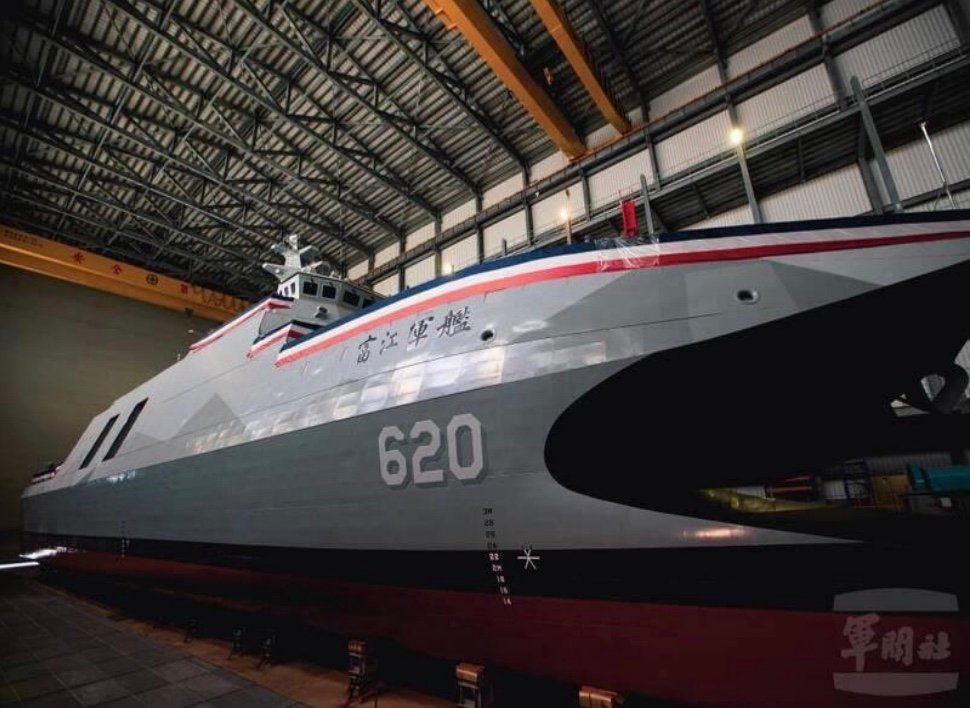
(Source: Taiwan Military News Agency)
On June 28th, Lung Teh Shipbuilding delivered ROCS Fu Chiang (PGG-620) to the Republic
of China Navy. The ship is the third Tuo Chiang-class multi-purpose corvette commissioned after
ROCS Tuo Chiang (PGG-618) and ROCS Ta Chiang (PGG-619). The next ship, ROCS Hsu Chiang
(PGG-621), is expected to follow in late 2023. In total, 12 ships have been planned for the class.
In keeping with the rest of the class, the ship is named after a minor river in Taiwan. In this
case, the Fuli River in Hualien County. The ship’s dimensions and armament are identical to the
ROCS Ta Chiang (PGG-619), the first production vessel of the Tuo Chiang class. It measures 65
meters long, 14.8 meters wide, and 6.2 meters tall and has a displacement of around 685 tons. 4
diesel engines power the ship, allowing it to reach a maximum speed of up to 30 knots when fully
armed. Its fully-indigenous sensor suite comprises a CS/MPQ-90 Bee Eye X-band phased-array
radar and a KT-2000 low-frequency navigation radar.
ROCS Fu Chiang, like other ships in the class, is armed with an Mk75 OTO Melara 76mm
gun mounted in a stealth cupola. Its stealth superstructure houses four dual-launchers for the
Hsiung Feng II anti-ship missile, four dual-launchers for the Hsiung Feng III anti-ship missile, and
two Hai Chien II surface-to-air missile launchers, each housing eight missiles. Its fire control system
is headed by the STIR 1.2 EO Mk2 designed by Thales.
In its mission to protect the integrity of Taiwan’s territorial waters and maintain the
freedom of navigation in the Taiwan Strait, the ROCS Fu Chiang is the latest piece to Taiwan’s
doctrine of asymmetrical warfighting and force-building against China, which has a much larger
military than Taiwan. Interestingly, the ship shares the same name in Mandarin as the immortal
titular character of the Japanese horror manga series Tomie.
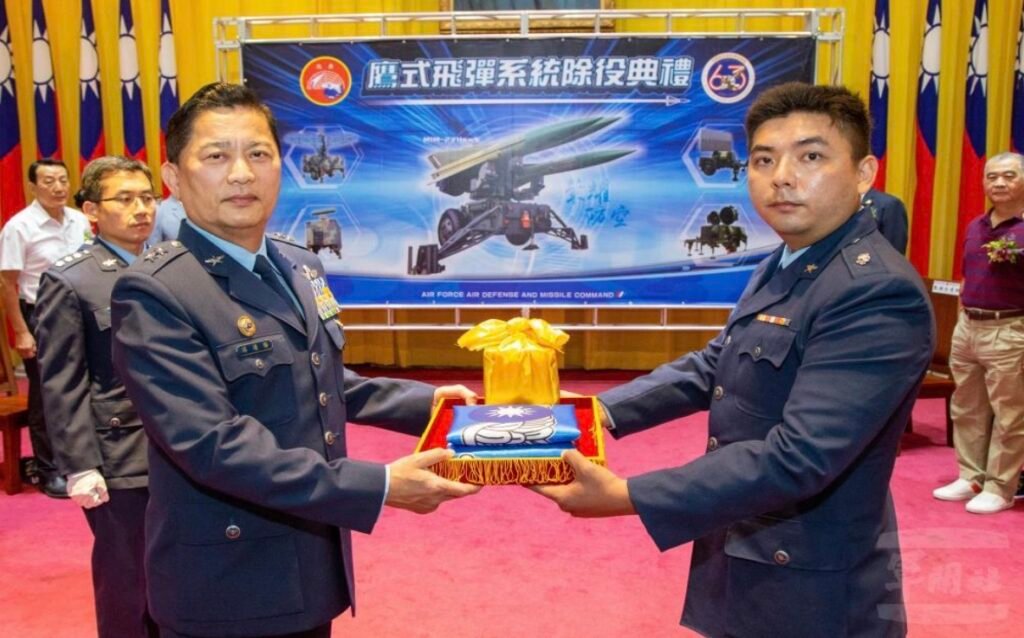
Taiwan Retires Hawk Missiles (Source: Chuang Chia-Hung, Military News Agency)
In a ceremony held at Tainan Air Base closed to the public, the Republic of China Air Force
formally retired the last MIM-23 Hawk missiles in service. This comes after news that the MIM-72
Chaparral surface-to-air missiles will be gradually phased out, with full retirement in the coming
years.
The Hawk was first designed as a mobile field air defense platform that would be more
mobile than the MIM-14 Nike Hercules. It was first deployed to Vietnam in 1965 during the
Vietnam War but its first combat firing would take place in Israel two years later. In Taiwan, the
system never saw combat.
The American-made missiles, which have been upgraded to the Hawk Phase III standard,
have defended the airspace of Taiwan and its outlying islands since 1960, just one year after it
entered service with the U.S. military. The last Hawk battery was relieved of duty earlier this year.
The system’s obsolescence became apparent as the years passed, and a shortage of spare parts
posed a financial and logistical burden. The emergence of superior and more modern systems of
U.S. and Taiwanese origin have also made the Hawk unnecessary in Taiwan’s national defense.
Taiwan’s short-range air defense is now undertaken by systems ranging from the shoulderfired Stinger man-portable air defense system to the AN/TWQ-1 Avenger and ground-launched
Tien Chien II. Its role in medium-range air defense has been replaced by the Tien Kung III and the
MIM-104 Patriot missile systems.
Taiwan’s Indigenous Defense Submarine Program Developments
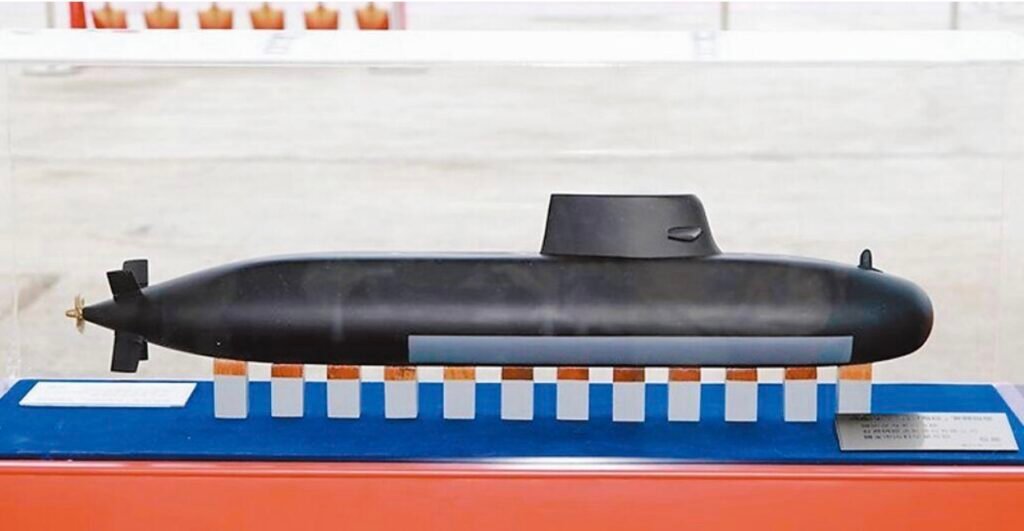
(Photo Credit: Republic of China Navy)
The lead ship of Taiwan’s Indigenous Defense Submarine Program is expected to be
launched in September 2023. The program is expected to produce eight vessels and is designed by
a coalition of engineers from the National Chung-Shan Institute of Science and Technology and
Lockheed Martin. CSBC Corporation, Taiwan is tasked with manufacturing the ships. The program
is one of the examples of President Tsai Ing-wen’s directive to grow the domestic defense sector.
According to multiple military sources, the lead ship will be armed with at least 18 Mk48
heavy torpedoes instead of the standard combination of Mk48 torpedoes and Harpoon anti-ship
missiles found on its Chien-Lung-class submarines. The military declined to comment on the
specific number of missiles the ship will carry.
Ships produced under the IDS program would all feature an x-form rudder configuration,
which would boost the submarine’s maneuverability in the Taiwan Strait’s narrow waterways.
They would all measure 70 meters long, 8 meters wide, and 18 meters tall and have a
displacement between 2,500 to 3,000 tons. Both sides of the ship are lined by passive sonar arrays
in an arrangement similar to the Royal Navy’s Astute-class. The lead ship will be powered through
air-independent propulsion, and decisions will be made at a later date regarding the propulsion
method of subsequent vessels.
Currently, the Republic of China Navy operates two aging Dutch-built Zwaardvis-class
submarines, named the Chien Lung-class in Taiwanese service. It also has two World War II-era
submarines of American origin for training purposes: ROCS Hai Bao (SS-792) and ROCS Hai Shih
(SS-791). The IDS program would allow Taiwan to modernize its submarine fleet and build up its
naval asymmetric warfare capabilities. Previously, Taiwan had attempted to purchase submarines
from Italy and France, but these plans were scrapped for a variety of political and economic
reasons.
MS-110 Multispectral Imagery System begins mass production, Taiwan among customers
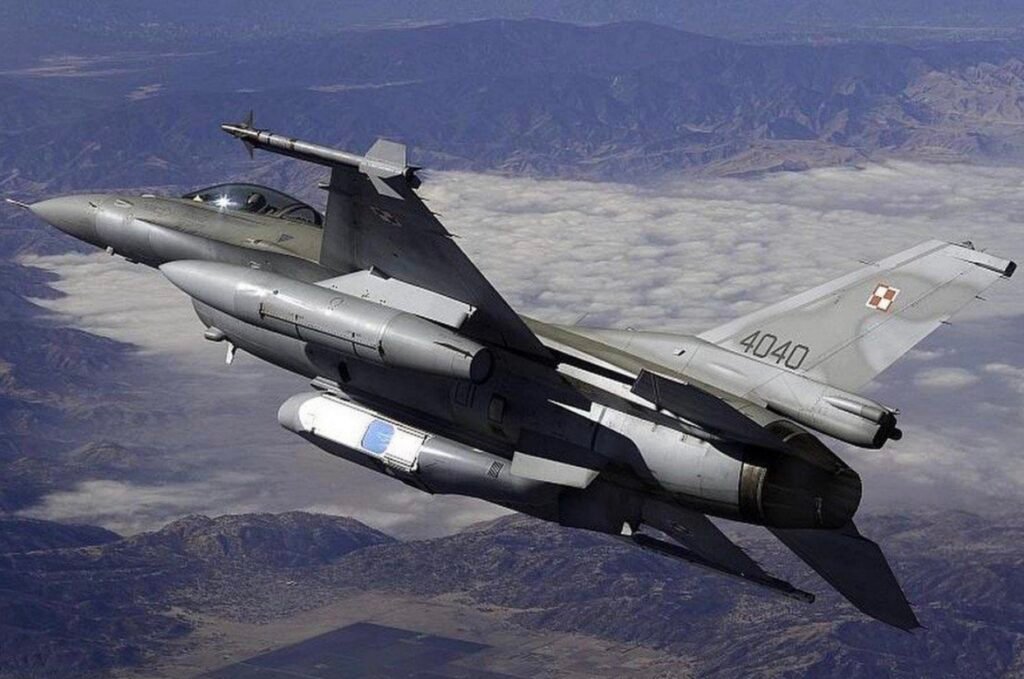
(Photo Credit: Collins Aerospace)
In June 2020, Taiwan ordered six MS-110 Multispectral Imagery System reconnaissance
pods for its F-16 fleet. The system completed its first test flight last August and began production
on July 14th. The 2020 purchase totals NT $963 million and all systems are due to be received by
2025, with technical and maintenance support from the US from 2026-2029.
MS-110 is an advanced variant of the widely-used DB-110 reconnaissance pod. It would
allow the Republic of China Air Force to gather and share intelligence more effectively, innovating
and maximizing the efficiency of force deployment. Currently, the Republic of China Air Force
inventory includes the “Feng Yan” reconnaissance pod, which lacks night vision capabilities and
faces logistical difficulties due to its age. MS-110 would allow targets to be viewed in true color, as
opposed to the grayscale color scheme of other pods in Taiwanese service. It would also have
thermal and infrared capabilities, allowing the operator to observe obscured targets in all weather
conditions.
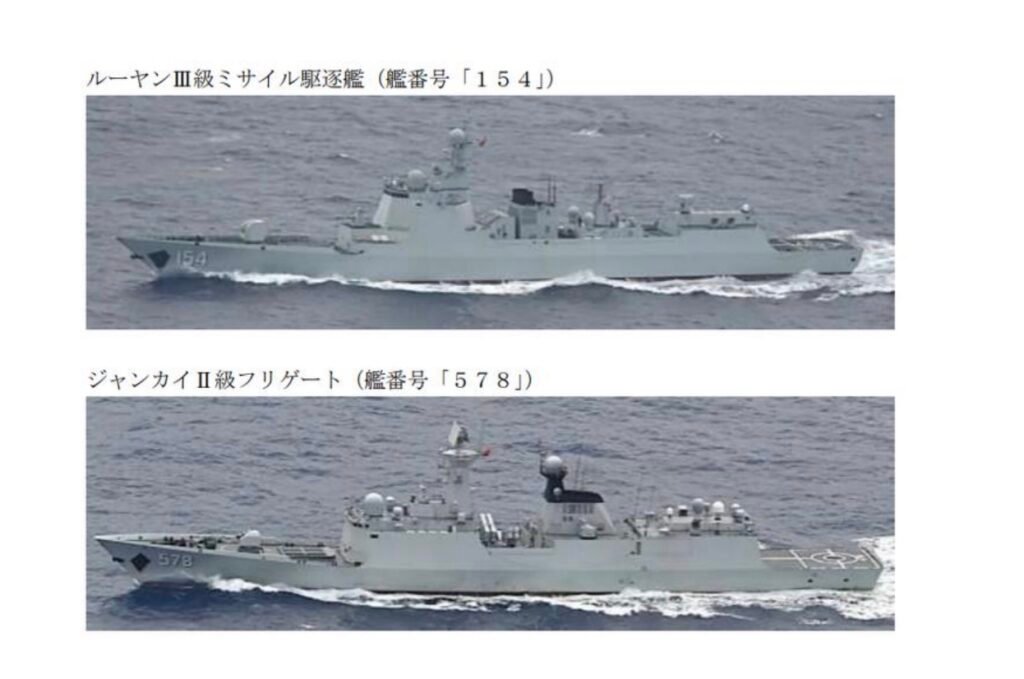
Two Chinese warships pass by northern Taiwan in run-up to Han Kuang exercises of Japan and Taiwan (Photo
credit: Ministry of Defense, Japan)
Taiwan is scheduled to hold its annual Han Kuang live-fire exercise this year from July 24-28 Japan’s Ministry of Defense and Taiwan’s Ministry of National Defense detected two People’s Liberation Army Navy warships transiting the waters between the Japanese island of Yonaguni and
Taiwan’s Yilan County. The two ships were identified as Type 052D destroyer Xiamen (154) and
Type 054A frigate Yangzhou (578), both highly advanced and modern warships of the Chinese navy
launched within the last 10 years. A ship-based Z-9 anti-submarine warfare helicopter was
observed by the Taiwanese Ministry of National Defense as well.
The Japanese Ministry of Defense documented and published images of the two ships
taken from a P-3C Orion of the Japan Maritime Self-Defense Force tasked to monitor the vessels
along with Japanese surface vessels. Taiwanese aerial assets and land-based Hsiung Feng anti-ship
missile units monitored the ships’ passage as well.
The two ships transited the Miyako Strait on 7/18 to join other PLAN ships conducting
military exercises off Taiwan’s eastern coast, and on 7/19, they sailed north between Yonaguni
and Taiwan.
